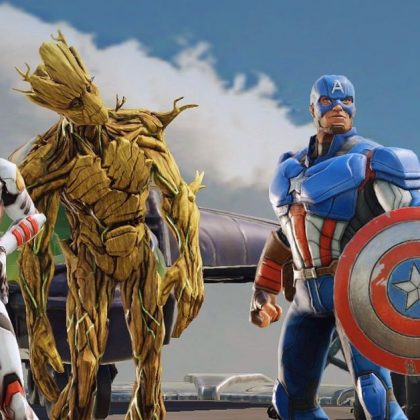In 2008, Level-5 was coming up on its tenth anniversary and wanted to produce a project that its staff was passionate about, regardless of how well it would sell, and the world was introduced to Ni No Kuni: The Another World. A two-pronged project, one version of it came to the Nintendo DS as the Japan-only Ni No Kuni: Dominion of the Dark Djinn and the second version came to the PS3 internationally as the expanded Ni No Kuni: Wrath of the White Witch.
A love letter to the golden era of JRPGs, Ni No Kuni was universally lauded for how closely it adhered to the famous art style of Japan’s Studio Ghibli, which contributed top staff to aid in both animation and music, and the title found considerable success both in Japan and overseas. Now, six years on from the PS3 title’s release date, Level-5 has opted to port over Ni No Kuni: Wrath of the White Witch to the Switch, marking the first time that Nintendo players have been given access to the full, expanded version of the original vision for this project. Though it does feature some rough edges, Ni No Kuni: Wrath of the White Witch proves itself to be an unforgettable and fanciful take on the RPG, and it more than deserves a home on your Switch.
After a brief cold opening that hints at the magical adventures to come, Ni No Kuni launches into its primary story of a young and somewhat naïve boy named Oliver, who lives in a small town in 1950s America called Motorville. What begins as a heartwarming tale of childhood innocence quickly takes a gut-wrenching turn, however, when an accident caused by Oliver causes his mother to die, rendering him an orphan overnight.
Distraught and damaged by his loss, Oliver weeps onto a toy his mother had made for him, and is shocked when the tears bring it to life. He’s suddenly faced by an odd, fast-talking creature named Drippy who speaks in a thick Welsh accent and claims he’s the “Lord High Lord of the Fairies.” Drippy explains to Oliver how there’s a parallel world being terrorized by an evil being named Shadar and, you guessed it, Oliver is the only one who can hope to defeat Shadar. One thing leads to another, and the duo are off to the races, exploring the strange otherworld that Drippy hails from and building their team as they prepare for the final confrontation.
Although the overall plot comes off as being rather cliché in many parts – how many times have we heard the ‘Chosen One’ song and dance? – Ni No Kuni’s greatest storytelling strength lies in its stellar writing and heartwarming messages. As evidenced by that disarmingly tragic opening, Ni No Kuni isn’t a title that shies away from going to some dark places when it needs to, but it’s ultimately an uplifting tale that repeatedly returns to the central idea of becoming whole again through the support of others.
As Oliver, Drippy, and the various allies they recruit move along the path to that battle with Shadar, you can’t help but feel a sense of connection to this team as you watch them repeatedly drop what they’re doing to help out those around them. Somewhat in tandem with this, Ni No Kuni also expertly captures the concept of childlike wonder, as it presents you with this weird and wonderful new world that’s similar to ours, but not quite. Whether you’re being berated by an ancient wizard with the appearance and demeanour of a toddler or trawling through a monster-infested sewer in search of the lost Cat King, you’ll seldom be able to guess what strange new creature or errand you may find yourself experiencing next. Even next to many modern RPGs, the storytelling and worldbuilding of Ni No Kuni prove to be uniquely charming, and we found its narrative to be fantastically immersive.
The typical gameplay loop of a classic JRPG is alive and well here, with your team travelling across the vast open world to various towns as the plot calls for it. Each town naturally has a problem (or a person with a problem) which can only be solved by Oliver and friends, and their efforts inevitably lead to them entering into a dungeon-like area and battling something big and nasty at the end of it.
Ni No Kuni breaks the mould of genre conventions in plenty of ways, but its structure is certainly not one of them, which may come as a drawback for some of you. Indeed, along with this familiar structure, Ni No Kuni is also very much what one would call a slow burn, with many portions of the story feeling like they drag on a bit longer than they need to. It’s a testament to the excellent writing and enrapturing details of the world that this laborious pace is so easily accepted, but just bear in mind that if you aren’t so easily charmed by the gorgeous visuals and wholesome tone, Ni No Kuni may prove to be a needlessly time-consuming experience. It’s worth the investment, but it nonetheless will demand a substantial amount of time in order for you to really ‘get it’.
This time commitment also extends to the battle system, which proves to be equal parts frustrating and exhilarating. Not quite real-time action and not quite turn-based, Ni No Kuni employs a unique system that utilizes many of the strengths of both styles of combat. Though you can control any of the party members directly, the meat of your experience will be spent controlling Familiars (more on that in a bit) to do the dirty work for you.
Though they all share their owner’s health and magic pool, familiars have the additional restriction of a stamina meter that limits their time on the field to around thirty(ish) seconds, after which you need to tag in another familiar or teammate. Whoever you’re controlling, you’ll have access to some mixture of standard attacks, special moves, spells, and defensive manoeuvres, each of which is governed by cooldowns. If, for example, you use the standard ‘Attack’ option, your character will auto attack your targeted enemy while a gauge on the side of the screen slowly runs down. Once its empty, you have to wait for an additional, faster gauge to empty before you can use the Attack command again.
Effectively managing all your cooldowns will be necessary to success, along with being mindful of a character’s positioning. If you try to attack a distant target with a melee attack, for example, you’ll waste some of its precious cast time while your character runs over to attack. It sounds like a lot to manage, but everything clicks into place after you experiment with it a bit and you see how combat proves to be both flexible and engaging. That is, when you’re not busy trying to mitigate your teammates’ mistakes.
Don’t let the cutesy visuals fool you; Ni No Kuni can be a ruthlessly unforgiving experience at many points, with even common enemy encounters in new areas requiring the dedicated efforts of all team members if you hope to come out on top. Unfortunately, no matter how much you invest in optimizing your team’s equipment and stats, much of that effort will be cast down the drain by the halfwitted AI. If, say, an enemy casts a fireball attack that burns the ground around the impact zone, your teammates are often happy to stand in the inferno as they’re slowly burned to death. Or, in a particularly egregious and reoccurring example, many bosses have heavily telegraphed super attacks that hit everyone on the field regardless of positioning. You’re all but required to use the ‘Defend’ command when you see these coming, and there’s ample time to do so, but your teammates are usually happy to just eat the full force of the attack and either die in the process or consume valuable healing resources to undo the damage.
Read More





